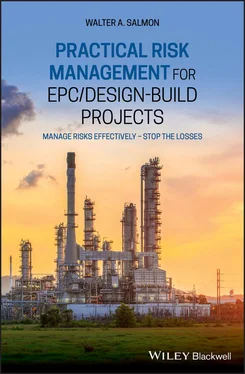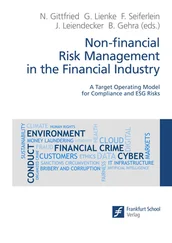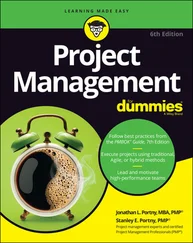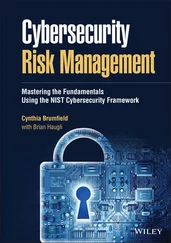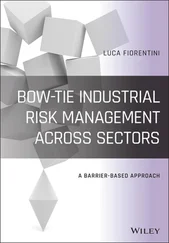In such cases it costs very little extra to arrange a sports day where the emphasis is on fun, or a barbecue-on-the-beach day. Holding film nights with the latest movies on show also helps boost morale, as does ensuring that televisions are provided to everybody, with access to a good selection of movies, and even Internet entertainment (with a stable connection). Providing wholesome and tasty food too, as well as worthwhile gymnasium facilities for excess calories to be worked off, also helps people feel more comfortable when they are working away from home. The list of other possibilities for making the lives of the workers better is long, and it just needs a little imagination and effort to give effect to such ideas.
The opposite approach to the above is if the workers on the Site are simply being pushed to get the Project finished on time without necessary additional resources being provided, and with little done to provide relief for the workers in their free time. This very quickly leads to workers being demotivated, and both productivity levels and work quality can then suffer as a result. In addition, and far more importantly, more risks may be taken by the workers due to their weariness. This same pressure can of course be applied to the Engineering and Procurement Teams with their office work. However, the consequences are much more likely to be the need to redo work or place ‘top-up’ orders for additional materials (with consequent higher cost implications), as opposed to risking the safety and health of the workers involved. Nonetheless, the additional stress that may be caused by constantly working under high pressure should not be an insignificant matter of concern. I myself have seen a number of good people fall by the wayside due to pressure of work. The safety, health, welfare, and general well-being of the workers should therefore be of the highest importance to the Contractor, and it requires a lot of effort and dedication from the management team to be successful in keeping the workers contented.
Of course, worker safety must be seen by all to be a critical aspect of how the Contractor operates. However, The Contractor must be careful that this is not viewed as purely a numbers game but, instead, it must be clearly shown that the HSE efforts stem from a genuine desire to keep the workers safe at all times. Aligning the productivity desires of the Contractor's Project Management Team with the requirement to ensure the safety of the workers means that much more attention needs to be given as to how the individual on-Site activities are performed.
It is fine to aim for finding ways to get the job done quicker, but that must be achieved by not adding risks to worker safety. In addition, working quicker must not compromise the quality of the finished product. This requires the management team to discuss detailed work procedures with the workers themselves, in order to fully explore improvement possibilities. However, I have observed that such steps are rarely taken. Unless such integrated team working is instituted from the Corporate Management Team all the way down to artisan level, a Contractor's chances of achieving top-notch ‘Operational Excellence’ (OE) will never materialise. In regard to OE, I particularly found Price's definition of OE very appropriate: ‘building a sustainable competitive advantage through operations management’ since, as he says, that objective ‘accommodates process, culture, and results’. 11 Since working properly towards achieving OE promises to be an almost sure-fire way to reduce risks (not least for the manual workforce), as well as increase profitability for the Contractor, I for one consider that OE is a goal worth striving for. I am therefore hoping that the concept catches on in a big way.
3.10 Allocating Responsibility for Handling Risks
I have seen a steady movement over the past decade or so to change the perception of Project Risk Management away from it being the simple application of common sense and more to it being an intricate management system that can only be applied by consultants who are specialised in the field. Perhaps this is because, as Professor John Adams has observed, it is not only that the word ‘risk’ ‘engenders a sense of urgency because it alludes to the probability of adverse, sometimes catastrophic, outcomes’, 12 but also, as he adds: ‘people are using the same word, to refer to different things, and shouting past each other’. 13 I have found that this trend has added some confusion about whose responsibility risk management is within a typical construction company. Consequently, this has been detrimental to the adoption by Contractors of a cohesive approach to implementing Project Risk Management, other than in respect of where physical (manual) work is involved (such as, for example, HSE matters, commissioning activities, etc.). Nowadays (I am very pleased to see), hands-on specialists/professionals in those particular fields (not pure risk management specialists) are engaged to manage the very real and ever-present day-to-day risks involved in such activities.
In order for a Manager to be held responsible for managing all the risks involved in his/her Department's work, he/she must first understand precisely what those particular risks are. However, I have rarely seen specific training given to Managers as to where the major risks relevant to their respective Departments sit. Without boundary limits for risk management being provided, the area of risk to be managed by Managers can appear to be very wide, and much more than the average Manager would be able to handle. That is probably a major reason why a good number of the Department Managers I worked with genuinely believed that the ‘upper’ management levels of their corporation were responsible for taking care of all the risks involved in the business. What was not well understood, as I discovered through questioning various Managers, is that, as Martin Lipton has stated, the Board of Directors ‘cannot and should not be involved in actual day-to-day risk management ’, 14 and ‘Directors should instead, through their risk oversight role, satisfy themselves that the risk management policies and procedures designed and implemented by the company's senior executives and risk managers are consistent with the company's strategy and risk appetite … that necessary steps are taken to foster an enterprise-wide culture that supports appropriate risk awareness … and that ensures that risk-taking beyond the company's determined risk appetite is recognized and appropriately escalated …’ 15
It is therefore not surprising that I also found that a common misperception of the Managers I spoke to was that all they are required to do is ensure that others under their control ‘get on with doing the Project work properly’, which Hayday's findings seem to corroborate. 16 That wrong view about who is responsible for managing the risks of doing the day job is probably the main reason why the interfaces between the different Departments are often not handled effectively. I am certain that, if they are honest with themselves, most Managers would acknowledge that they are aware of instances where they themselves failed to deal with some risks properly (particularly with inter-Departmental interfaces), which then resulted in avoidable (and thus personally embarrassing) delays occurring and/or rework becoming necessary.
1 1Brady J. (Reprinted from Pharmaceutical Engineering) (January/February 2015). Risk assessment: issues and challenges. https://www.ispe.gr.jp/ISPE/07_public/pdf/201506_en.pdf(accessed 11 September 2018).
2 2Colhoun C. and Haidar T. (for Oil & Gas iQ) – (15 April 2017). Death Of The MegaProject?: How to Solve the Problems Involved in the Oil & Gas Industry (accessed 26 April 2017).
Читать дальше
